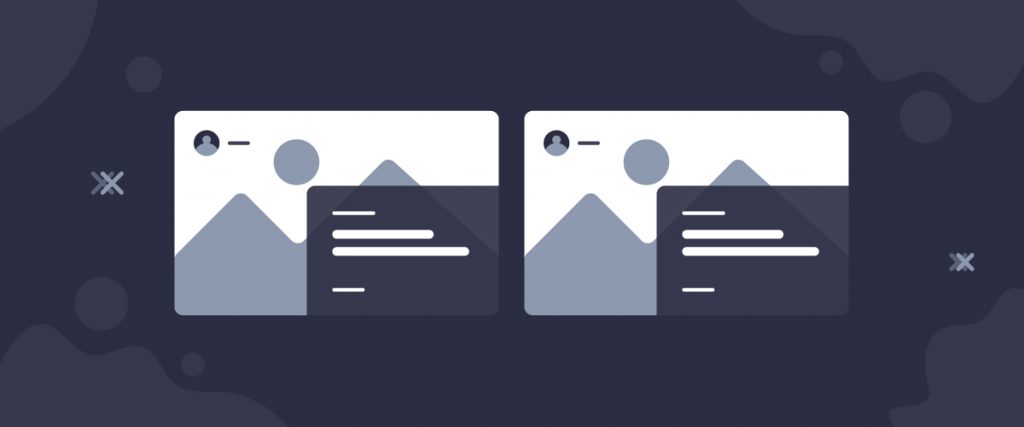The Alex Grid widget is a first-hand element of the Ultimate Post Kit add-on. This tool helps you make the perfect blogging site by rearranging posts into a smart grid formation.
Let’s have a look at how it works!
Inserting widget

Find the Alex Grid widget from the widget menu in the Elementor page editor and drag it inside your webpage.
Content tab
The Content tab holds the base settings for the widget and lays the foundation of the layout of the final content. It’s divided into three parts for the Alex Grid widget.
Layout
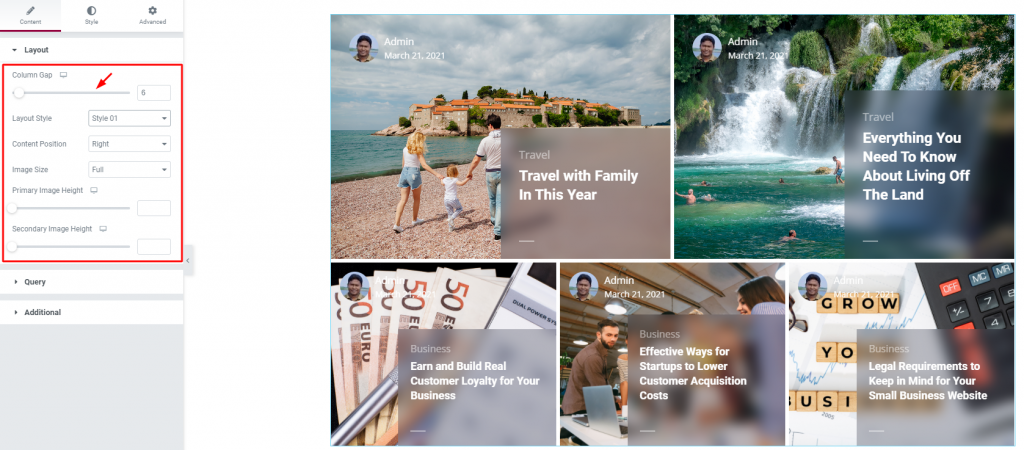
Go to Content> Layout
In this section, you can adjust column gaps for the posts as well as set the position of the content of the Alex blog widget.
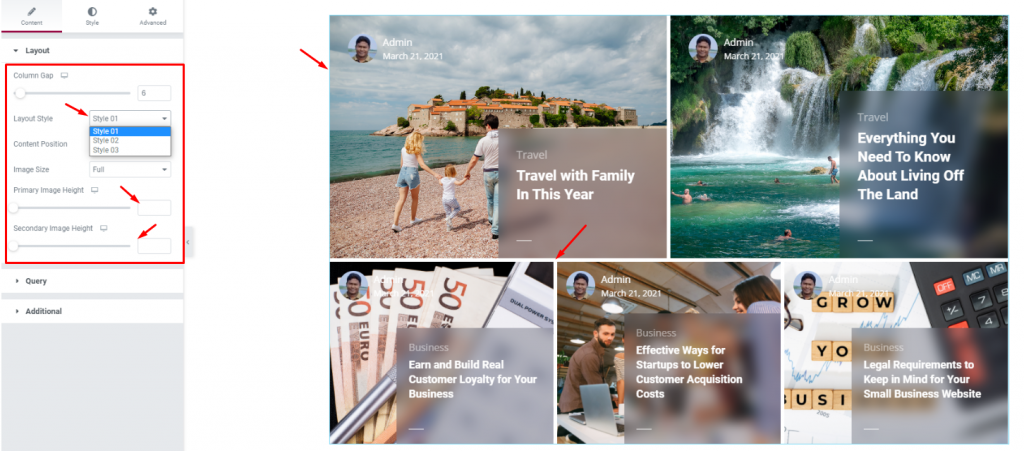
There are 3 styles for the content layout where the numbers 1 & 3 support primary and secondary posts viewers. You can set the height of the post image below the style option. This works for both the primary and secondary images.
Query

Go to Content> Query
Here, you need to define the number of posts shown on the display. The source can be selected from posts, pages, and landing pages. You can show categories, tags, as well as set the order of the posts for the blogging widget.
Additional
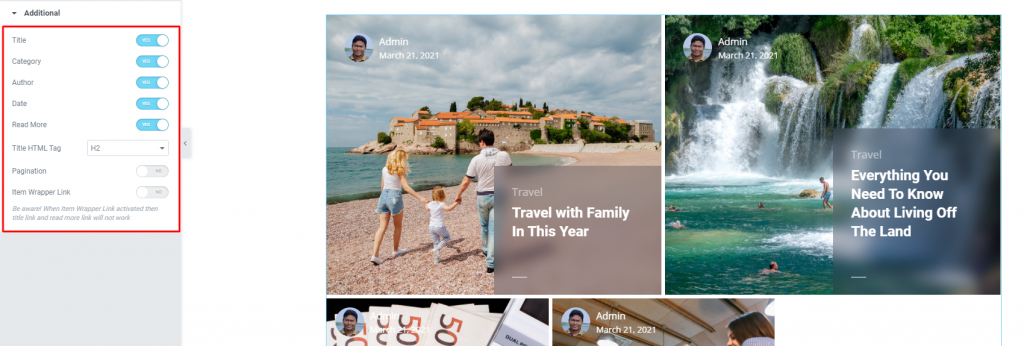
Go to Content> Additional
This section is made with a number of switchers that can be turned on/off to show/hide the specific item on the display. These are for the titles, category, avatar, date, etc.
Style tab
The style tab allows you to change or customize the appearance of the Alex Grid widget content layout. The options include color settings, borders, paddings, etc.
There are 7 sections on this tab.
Items

Go to Style> Items
Add borders around the posts including color & radius for both the normal and hover mode. Use the box-shadow option to add a 3D vibe to the post blocks of the Elementor post grid.
Content
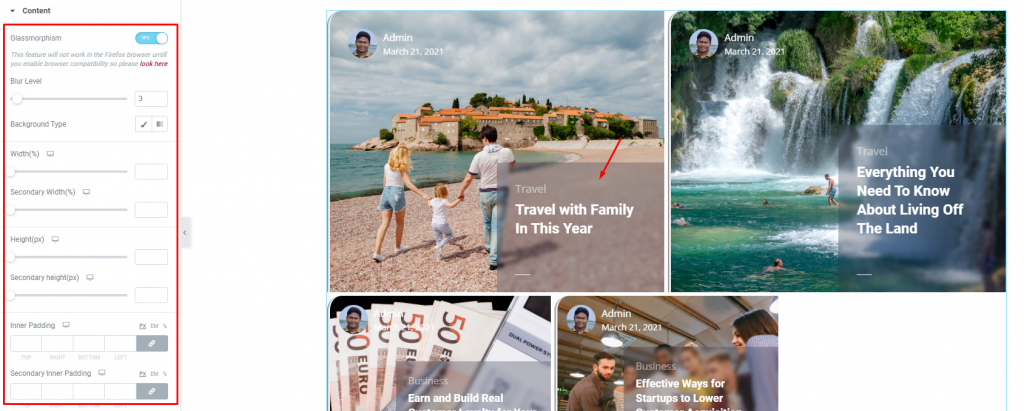
Go to Style> Content
The content for the Alex Grid widget is the semi-transparent box inside the posts. They include a title, category, tags, and a read-more button.
You can activate the Glassmorphism effect on the content by turning the switcher on top and adjust the values using the scrollbars below. Also, you can increase/decrease the inner padding of the content area of both the primary and secondary posts.
Title

Go to Style> Title
The Title section mainly gives you the option to change the text color and typography of the titles. The color option is available for both active & hover modes. There is another switcher called Advanced Style at the bottom.
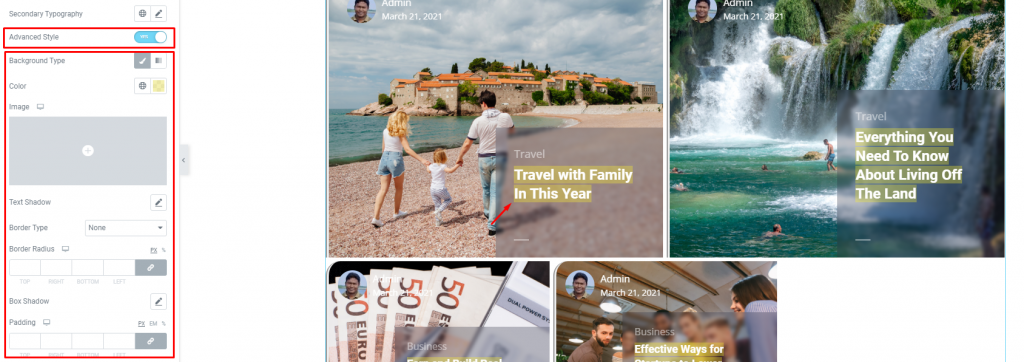
Turning it on will reveal more options such as background type & color, text-shadow, border, padding, etc. These options will give extra visual effects on the titles.
Category
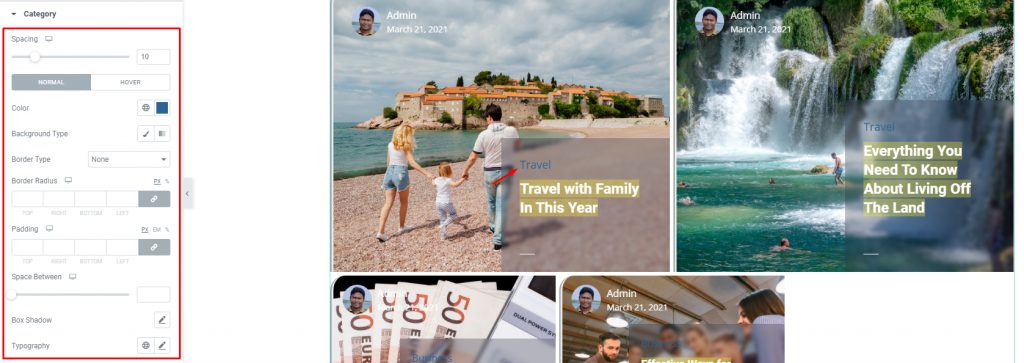
Go to Style> Category
The category option enables you to customize the category text on top of the content area of the Alex blog grid. Set their color, border, typography and make it more eye-catching.
Read More
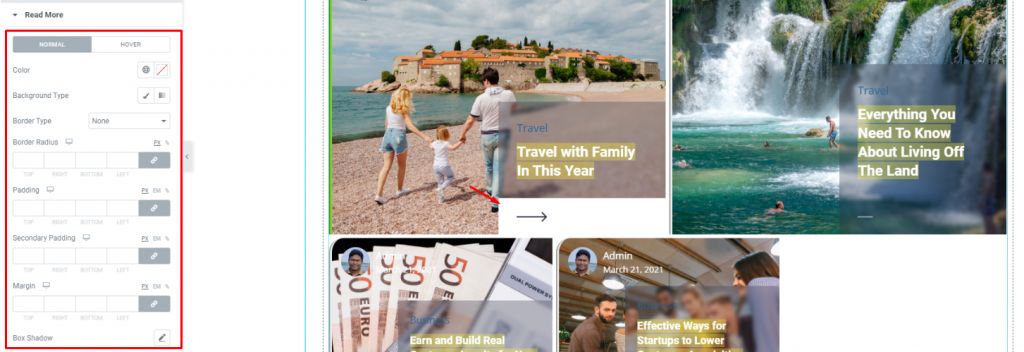
Go to Style> Read More
The Read More button for the Alex Grid widget is a bit special. You won’t see this button unless you hover over the bottom part of the content area of any post. It is defined with an arrow.
You can customize the button appearance in this section by color, border, padding, etc.
Author

Go to Style> Author
Of course, each post has an author that will be displayed on the top of the post block. However, the author’s image size, spacing, name colors can be customized through this section.
Date

Go to Style> Date
Lastly, the date. Change the text color and typography of the date beside the author info for all posts.
Conclusion
Still, stuck?
Watch this quick video for visual instruction and see the demo page for more examples, provided by Bdthemes.

